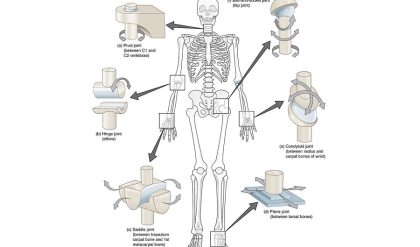There were a number of research papers (Gabbett, 2016), (Drew & Finch, 2016), (Jones, Griffiths, & Mellalieu, 2017) that suggest poor load management i.e. doing too much too quickly, increases your chances of injury.
And a consensus statement on load in sport and risk of injury International Olympic Committee suggested the following:
· ‘High loads can have either positive or negative influences on injury risk in athletes, with the rate of load application in combination with the athlete’s internal risk factor profile likely being critical factors’ (Soligard, Schwellnes, Alonso, Bahr, Clarsen, Dijkstra & Engebretsen, 2016) i.e. it looks like load management and athlete’s internal risk factor that are relevant
They also wrote:
· ‘There is evidence from some sports that if load is applied in a moderate and progressive manner, and rapid increases in load—relative to what the athlete is prepared for—are avoided, high loads and physically hard training may offer a protective effect against injuries’ (Soligard et al., 2016) i.e. if loads are managed, hard training may be protective
And finished with:
· ‘more research is needed on ‘ interaction with other physiological, psychological, environmental and genetic risk factors’ (Soligard et al., 2016).
So maybe biopsychosocial (BSP – the relationship between biology, psychology, and socio-environmental factors) factors play a role? Research from the German Young Olympic Athletes’ Lifestyle and Health Management Study (GOAL Study) which included information on squad athletes from all Olympic disciplines suggested that:
· ‘in many cases, injuries are the result of a complex interplay of biological, psychological and social processes.’ (Thiel, Schubring, Schneider, Zipfel, & Mayer, 2015)
A research paper from (Johnson & Ivarsson, 2017) suggested the following:
· ‘Based on substantial empirical evidence it is also shown that changes in stress and perceived recovery appear to predict injury occurrence in sport. Current studies, focusing on overuse injuries, also suggest that cultural norms and rules can be seen as factors that can indirectly influence the risk of becoming injured.
i.e. Stress and cultural norms, e.g. what the group tends to believe can affect likelihood of injury
So, it looks like there might be a number of factors at play; whether you engage in strength training, how you manage your load and biopsychosocial factors. There is also a suggestion that how the brain perceives stress could influence injury risk as well (McEwen, 2017).
Maybe that’s why there isn’t specific government advice on it – it’s complex?
Perhaps a complex problem requires a complex model to help solve it, one where:
· ‘Sports injury prevention relies on the identification of risk profiles, which means moving from risk factors to risk pattern recognition. This approach considers an interconnected and multidirectional interaction between all factors, which embrace the complex nature of the sports injury’ (Bittencourt, Meeuwisse, Mendonca, Nettel-Aguirre, Ocarino & Fonseca, 2016)
i.e. Try to identify a range of factors (web of determinants (Bittencourt et al., 2016) that might contribute towards (or help protect against) injury and how they might interact. Some factors being more relevant than to certain individuals than others, or from one group to another or from one sport to another. However once identified they can be monitored and predictions made.
So maybe you could try to identify what factors are relevant to you or the group that you train/train with and start to monitor and see if any patterns emerge. Some potential factors for you to consider below:
· Whether you/they undertake strength training
· Load management
· Stress
· Sleep
· Fatigue
· Susceptibility to pain
· Self-efficacy
· Anxiety
· Beliefs about injury
· Previous injury
· Cultural beliefs about injury
· Complexity of activity
HOW RELIABLE WILL THIS APPROACH BE?
One would assume that all predictive models carry an element of risk and therefore unpredictability. However if we use a horse racing analogy, you are probably more likely to be able to predict the winner if for example you know how quick the horses are in comparison to each other, what surfaces they like to race on and who their jockeys are, than if you knew nothing at all.
However, the question we set out to answer was does strength training help reduce your chance of injury? The research reviewed suggests that it does (alongside a wide range of other factors ). Perhaps a controlled stressor like strength training can help promote both mental and physical adaptation (McEwen, 2017) and therefore greater confidence in a person’s ability and body?



